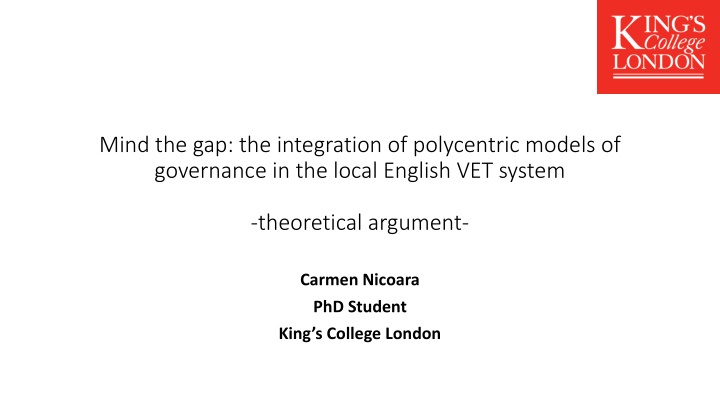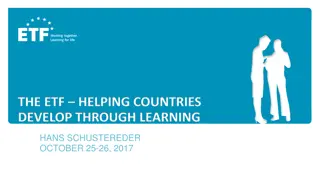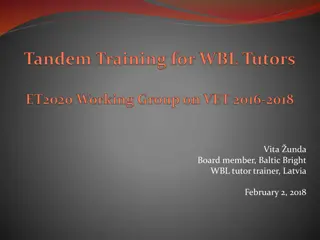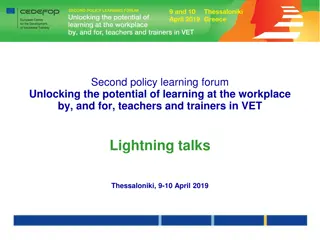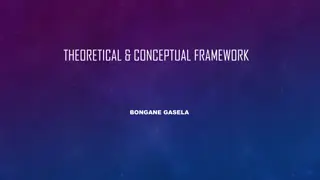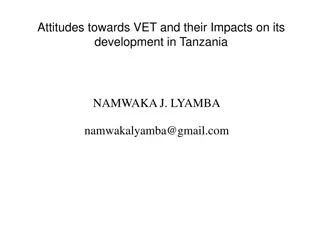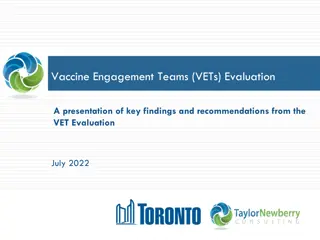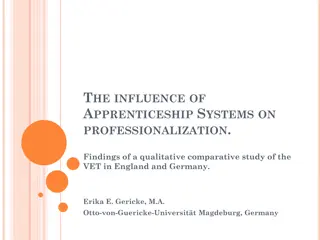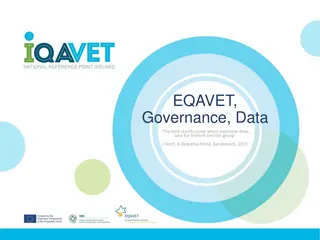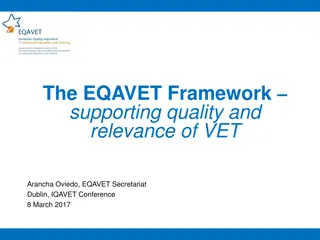Integration of Polycentric Models in English VET System: Theoretical Framework
The theoretical argument explores the free-riding problem in training, proposing a polycentric model of governance to address it. It discusses the role of Local Enterprise Partnerships (LEPs) in overcoming this challenge. Additionally, an apprenticeship theoretical framework and the concept of training as a collective good are presented. The collective action problem of training is identified, leading to sub-optimal investment in training. Finally, the proposed solution involves Ostrom's polycentric model of governance, emphasizing multiple centers of decision-making.
Download Presentation

Please find below an Image/Link to download the presentation.
The content on the website is provided AS IS for your information and personal use only. It may not be sold, licensed, or shared on other websites without obtaining consent from the author.If you encounter any issues during the download, it is possible that the publisher has removed the file from their server.
You are allowed to download the files provided on this website for personal or commercial use, subject to the condition that they are used lawfully. All files are the property of their respective owners.
The content on the website is provided AS IS for your information and personal use only. It may not be sold, licensed, or shared on other websites without obtaining consent from the author.
E N D
Presentation Transcript
Mind the gap: the integration of polycentric models of governance in the local English VET system -theoretical argument- Carmen Nicoara PhD Student King s College London
Theoretical argument: 1. The problem: free-riding problem of training 2. The speculative solution: polycentric model of governance (polycentric = multiple independent centers of governance) 3. The speculative solution in practice: the role of Local Enterprise Partnerships (LEPs) in addressing the free-riding problem
Apprenticeship theoretical framework Apprenticeship Training and experience in the training firm s workplace Part-time formal education Transferable training Specific training Generic training in professional communication skills in building, repairing and operating a 3D printer in operating a specific model of 3D printer, for a specific production process Useful to some but not many firms Useful to very few firms Useful to many firms relatively high external value low external value high external value (Becker, 1962; Stevens, 1994)
Training as a collective good Presence of external value = non-excludable = collective good Cost-benefit analysis of investment in human capital with external value, under imperfect competition: Firm A: Cost position Production-of-benefits position Benefits Firm B: No-cost position (Olson, 1965)
The collective action problem of training The action of investing in transferable training leads to a collective action problem (CAP) for employers (Sandler, 2015) CAP of training = the free-rider problem , which assumes firms preference to achieve firm-specific outcomes without necessarily paying for it CAP of training -> Sub-optimal investment in training: 1) too few workers will be trained (Lewis, 2014:13) 2) training will be restrictive, producing narrow experts with firm-specific skills (Fuller & Unwin, 2003:47)
Theoretical framework for the proposed solution to the free-riding problem Ostrom s polycentric model of governance: - multiple centres of decision-making (independent, overlapping and with duplicating functions) - which act as a coherent system under a general system of rules - which interact with each other through cooperation, competition, and/or conflict resolution (V. Ostrom et al., 1961:831)
Proposed solution (cont.) This model of governance can lead to: - polycentric systems of incentives - polycentric system of feedback and of preference-sharing mechanisms Empirical question: How can the localism agenda affect the capacity of the apprenticeship system to produce the relevant well-rounded experts needed in different industries?
Apprenticeship Levy UK Government LEPs Non-levy-paying employers (NLPs) Levy-paying employers (LPs) Training providers Apprentices Apprentices Addressing local skills shortages through polycentric system of incentives, of Skilled workforce Top-down target: 3 million new apprenticeships by 2020 make up a national total. Hypothetically: feedback mechanisms and preference- sharing mechanisms 3 million skilled workers, of which 2 million are Level 2 business administrators Locally-agreed targets that
Summary of theoretical argument: 1. The problem: free-riding problem of training 2. The speculative solution: polycentric model of governance (polycentric = multiple independent centers of governance) 3. The speculative solution in practice: the role of Local Enterprise Partnerships (LEPs) in addressing the free-riding problem
References Becker, G. S. (1962). Investment in Human Capital: A Theoretical Analysis. Journal of Political Economy 5 (2):9-49; Fuller, A. & Unwin, L. (2003). Learning as Apprentices in the Contemporary UK Workplace: creating and managing expansive and restrictive participation. Journal of Education and Work, 16:4, 407-426; Lewis, P. A. (2014). The Simple Economics of Apprenticeships. London: Gatsby Charitable Foundation; Olson, M. Jr. (1965). The Logic of Collective Action: Public Goods and the Theory of Groups. Cambridge, MA.: Harvard University Press; Ostrom, V., Tiebout, C., & Warren, R. (1961). The Organization of Government in Metropolitan Areas: A Theoretical Inquiry. The American Political Science Review, 55(4), 831-842; Sandler, T. (2015). Collective action: fifty years later. Public Choice, 164(3-4), pp.195-216; Stevens, M. (1993). Some issues in the economics of training. PhD Thesis, Oxford.
